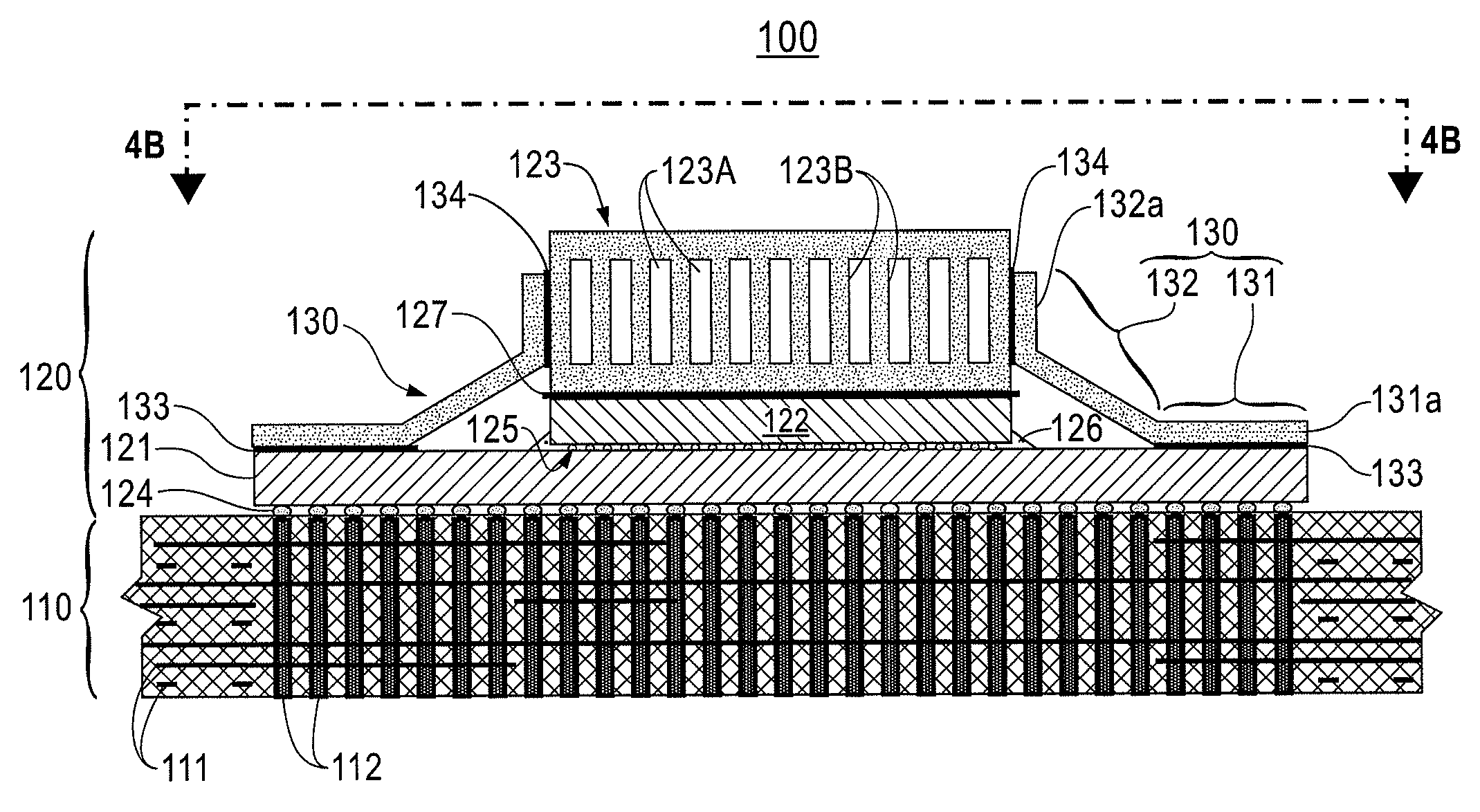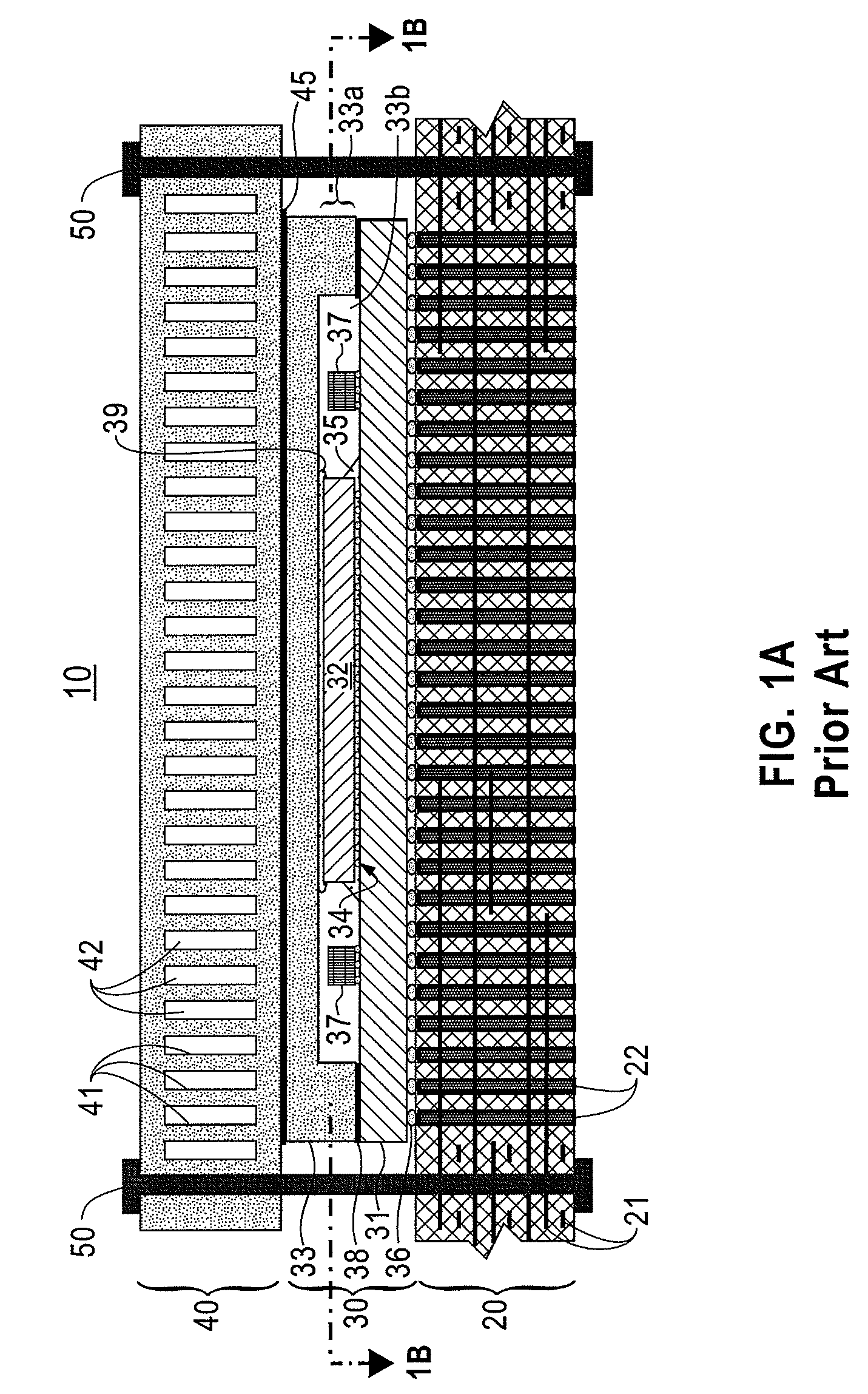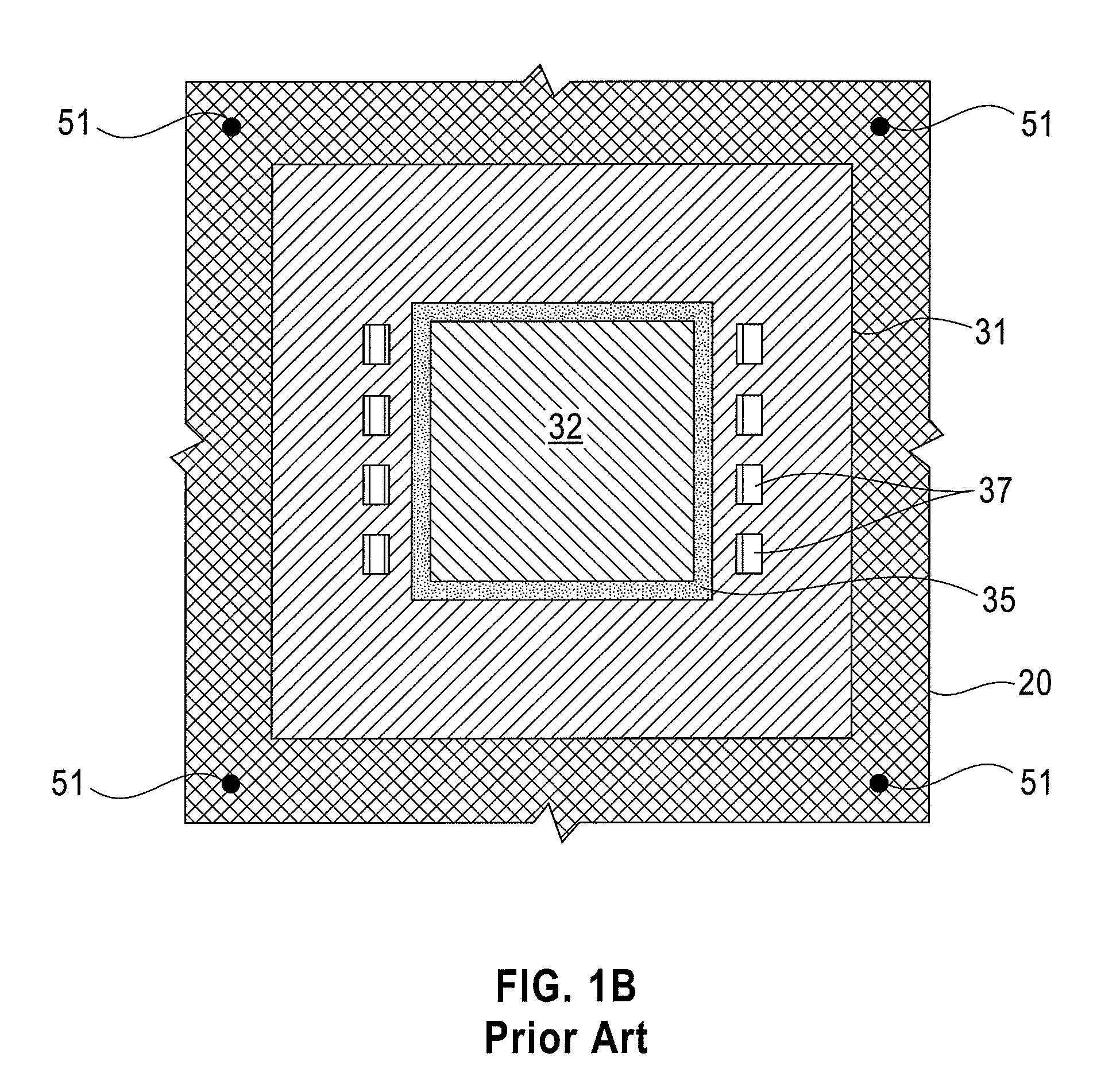Semiconductor Package Structures Having Liquid Coolers Integrated with First Level Chip Package Modules
a technology of semiconductor package structure and liquid cooler, which is applied in the direction of semiconductor device details, semiconductor/solid-state device devices, electrical devices, etc., can solve the problems of power density, limited ability to implement chip modules with higher densities and performance, and inability to remove heat from air cooling solutions, etc., to prevent the effect of package defect mechanism and structural failur
- Summary
- Abstract
- Description
- Claims
- Application Information
AI Technical Summary
Benefits of technology
Problems solved by technology
Method used
Image
Examples
Embodiment Construction
[0046]Various techniques for constructing electronic modules having chip level package structures with integrally packaged metallic liquid cooling devices will now be described in further detail with reference to exemplary embodiments discussed hereafter. In general, electronic apparatus according to exemplary embodiments of the invention include semiconductor chip modules, such as SCMs, having an IC chip flip chip mounted on a first (top side) surface of a flexible carrier substrate having an area array of electrical contacts formed on a second (bottom side) surface of the substrate opposite the first surface, a metallic cooler thermally coupled directly to a backside surface of the IC chip and a stiffener member which is (i) bonded to the first surface of the carrier substrate to provide mechanical rigidity to the carrier substrate, as well as (ii) mechanically coupled to the metallic cooler to fixedly dispose the metallic cooler device in place on the backside of the IC chip.
[004...
PUM
 Login to View More
Login to View More Abstract
Description
Claims
Application Information
 Login to View More
Login to View More - R&D
- Intellectual Property
- Life Sciences
- Materials
- Tech Scout
- Unparalleled Data Quality
- Higher Quality Content
- 60% Fewer Hallucinations
Browse by: Latest US Patents, China's latest patents, Technical Efficacy Thesaurus, Application Domain, Technology Topic, Popular Technical Reports.
© 2025 PatSnap. All rights reserved.Legal|Privacy policy|Modern Slavery Act Transparency Statement|Sitemap|About US| Contact US: help@patsnap.com



